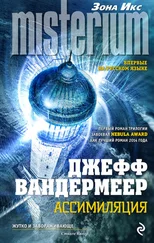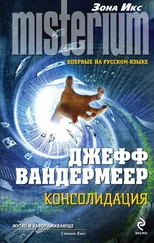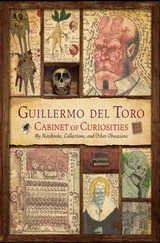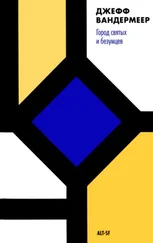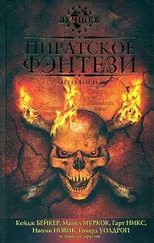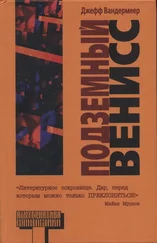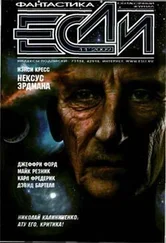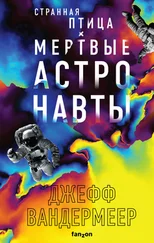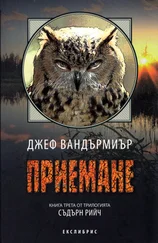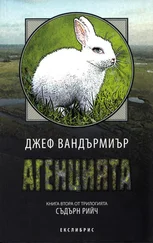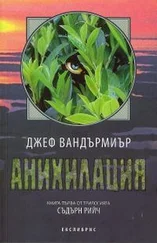Джефф Вандермеер - The Thackery T. Lambshead Cabinet of Curiosities
Здесь есть возможность читать онлайн «Джефф Вандермеер - The Thackery T. Lambshead Cabinet of Curiosities» весь текст электронной книги совершенно бесплатно (целиком полную версию без сокращений). В некоторых случаях можно слушать аудио, скачать через торрент в формате fb2 и присутствует краткое содержание. Жанр: Фэнтези, на английском языке. Описание произведения, (предисловие) а так же отзывы посетителей доступны на портале библиотеки ЛибКат.
- Название:The Thackery T. Lambshead Cabinet of Curiosities
- Автор:
- Жанр:
- Год:неизвестен
- ISBN:нет данных
- Рейтинг книги:5 / 5. Голосов: 1
-
Избранное:Добавить в избранное
- Отзывы:
-
Ваша оценка:
- 100
- 1
- 2
- 3
- 4
- 5
The Thackery T. Lambshead Cabinet of Curiosities: краткое содержание, описание и аннотация
Предлагаем к чтению аннотацию, описание, краткое содержание или предисловие (зависит от того, что написал сам автор книги «The Thackery T. Lambshead Cabinet of Curiosities»). Если вы не нашли необходимую информацию о книге — напишите в комментариях, мы постараемся отыскать её.
The Thackery T. Lambshead Cabinet of Curiosities — читать онлайн бесплатно полную книгу (весь текст) целиком
Ниже представлен текст книги, разбитый по страницам. Система сохранения места последней прочитанной страницы, позволяет с удобством читать онлайн бесплатно книгу «The Thackery T. Lambshead Cabinet of Curiosities», без необходимости каждый раз заново искать на чём Вы остановились. Поставьте закладку, и сможете в любой момент перейти на страницу, на которой закончили чтение.
Интервал:
Закладка:
Two English-speaking lip-readers have claimed the dust said this dog will never be your friend amid a stream of meaningless syllables. An Italianophone claimed that it told her three times to cross the bridge . It is too late for the light has been seen spoken in four languages. In 2002, a Hindi reader and a Finnish one both claimed to have read the lips at the same moment, the first seeing stop up all these gaps before it comes, the latter consider where your own bones go .
Opinion is divided as to how to proceed. Lambshead was a pessimist on this issue. “As Lichtenberg said of angels,” he wrote in one of his last letters, “so I say of dust. If they, or it, ever could speak to us, why in God’s name should we understand?”
Two things remain unclear, and intemperately debated. One is the origin of the quiet Egyptian heads that watch the Pulvadmonitor, the Dust’s Warning, approvingly. They were not a gift from Lambshead. No one knows their provenance, and there is no record of their arrival.
The second concerns the “Violent Philosophy of the Archive.” This essay, in which is the footnote where first is mentioned the Dust’s Warning, and which hints at the importance of its (second) birth, was found in a sheaf of Lambshead’s papers dating from the mid-1980s and published posthumously. What is controversial is precisely when it was written. Textual evidence suggests that while it might have been just after, it could very well have been just before, the nook in the museum attic was uncovered. The question is whether, in other words, Lambshead was musing on something recently discovered; or was waiting impatiently for something that he had prepared to be found again.
The dust doubtless knows the answer, and its agitated efforts notwithstanding, can tell us, and warn us of, nothing.
The Miéville Anomalies

The Miéville Anomalies
The following art from China Miéville and accompanying descriptions by writer Helen Oyeyemi and “philosopher prince” Reza Negarestani first came to our attention by an exceedingly circuitous route that started with an anonymous e-mail that linked to a long article on Lambshead’s “secret past” published by an Athens newspaper. A week later, a letter with a Malaysian postmark arrived from someone named only “Incognitum,” who claimed to belong to a secret radical society devoted to change “through extreme re-contextualization and cross-pollination.” The envelope contained a key to decode the article. Two weeks after that development, the editors of this volume had an unpleasant encounter with a masked stranger who shadowed the house for two weeks before leaving a rather less encrypted message on the garage door.
Decoding the article revealed the text for “The Very Shoe” and “The Gallows-horse.” Photographs of the crudely related pictographs on the garage door with the initials “CM” scrawled beside them were sent to the agent of China Miéville, whose sole response was to provide the two images reproduced herein. Failed attempts were made to telephone both Helen Oyeyemi and the Philosopher Army or “Shield Wall” dedicated to preventing Reza Negarestani from being contaminated by the world.
Although these inquiries yielded no direct results, we subsequently received permissions to reprint from the same Malaysian address, which a Google Earth search revealed to be an empty lot in Kuala Lumpur. Thus, while we present this material as “in the spirit” of the cabinet, we cannot verify that Dr. Lambshead ever possessed such a shoe, or such a gallows-horse. As of this writing, there seem few options for obtaining further information. (It was a condition of Miéville’s participation in this compilation “and any future project that you may wish to pursue with him until either his demise or your own,” per telephone conversations with his designated “metamorphosis attaché,” that we not question him further on the subject.)
The Very Shoe
As Told to and Compiled by Helen Oyeyemi
Created:circa 1940–1941
Creator:Radim Kasparek (1901–1971) of Bohumil, Moravia
Materials:Silk and canvas, with leather uppers, glass strip (3 cm), pinewood heel. Antenna: galvanized steel. Inner compartment (low-grade balsa wood, cotton lining) and accompanying window (low-grade balsa wood, 10 denier nylon) at the front of the outer sole added at a later date by person/s unknown
Property of:Petra Neumann née Tichy (1970–), legal owner of shoe as per inheritance. Lambshead’s diary notes that “the most curious shoe” arrived in the first post on September 28, 1995, in a box postmarked Lausanne, accompanied by a note dated “October 1990”: “I trust you, Lambshead—inasmuch as I can be bothered to trust anybody. We are forbidden to bring material possessions to the monastery, so I leave this in your hands. Its value is beyond measure to me. It is my great-aunt’s shoe—the other one is lost, but the story in the family is that when Ludmila first saw the pair she was absolutely thrilled, clasped her hands together, and said in her best English: ‘They’re just too very very!’ So I call it ‘the Very Shoe.’ This thing is a witness, my friend. It stands by and it does not change its story. Extend the antenna and listen. Then tell me: am I mad, or are there still miracles in the world?” It can be seen that the doctor underlined the words “the monastery” and surrounded them with red exclamation marks, and indeed, the location and affiliation of this “monastery” Neumann mentions is unknown; subsequently, so are Neumann’s current whereabouts. The only other extant note from Neumann to Lambshead mentioning this institution is found among his papers—Neumann describes “the monastery” as “a place you go to learn conversation with stones, to find out what it is stones know.”
Accession number:L1990.43
The story of this shoe is quite a plain one, I’m afraid—the shoe has no ethnographic significance, nor does it have anything as exciting as a curse or a long-standing feud associated with it. It was made by a man who was not exactly poor, but close enough. He was awkward-looking, and he stammered because he was shy, and he always said the wrong thing to women, so they didn’t like him. He believed that he was born to loneliness. He ended up alone, so maybe he was. There was a William Blake poem that he muttered to himself as he worked, joining soles and heels:
Man was made for joy and woe;
And when this we rightly know
Through the world we safely go . . .
(there’s more but it is a long poem)
. . . Every night and every morn
Some to misery are born.
Every morn and every night
Some are born to sweet delight.
Some are born to sweet delight,
Some are born to endless night.
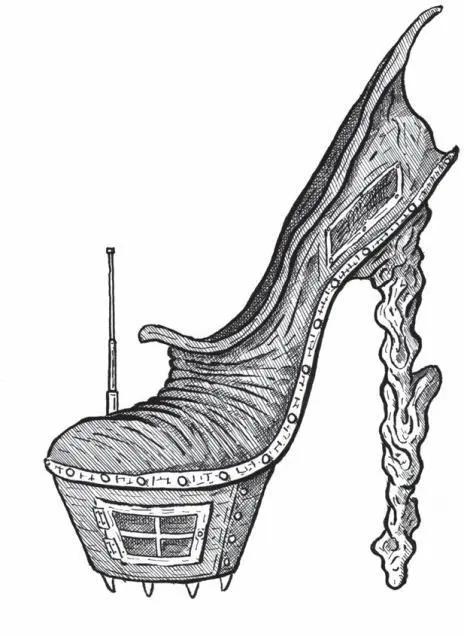
And yet, and yet, Radim got a wife. A woman of elegance, a dancer. Ludmila. She had dainty, beautiful feet, with the highest and most pliant arches Radim had ever seen. The glass panel on the side of the shoe is titillation, designed to show a mere hint of a beautiful curve. Ludmila was of the Romani. One day, some soldiers and some doctors came to Bohumil, and they separated the Romani men from the Romani women, and made inspections of their health. The soldiers and the doctors found Ludmila even though she lived in a house with Radim—vigilant neighbours informed them that some of the Romani lived in houses now, so they knocked on doors. Ludmila’s health was excellent, and the following week she was sent a letter, ordering her to settle her affairs before a certain date, twenty-eight days away. Then, on the date given, she must go to a camp at Lety and serve as a labourer. Radim began to make plans for the two of them to run away together, but Ludmila would not run. Radim applied to go to the labour camp with her, but his application was refused. So he made her a pair of shoes, because he didn’t know what else to do. Ludmila danced for him the night before she went to the camp, and he was afraid that he’d made the heel too high. The next afternoon, Radim’s younger brother, Artur, went around to Radim’s shop to see how he was holding up after Ludmila’s departure. Radim told him about the dancing: “At one point she was simply spinning, round and round. And so fast, her face was a blur. It looked dangerous. And she said— I can’t stop! Catch me! And I did. But what about when she’s over there? What if—”
Читать дальшеИнтервал:
Закладка:
Похожие книги на «The Thackery T. Lambshead Cabinet of Curiosities»
Представляем Вашему вниманию похожие книги на «The Thackery T. Lambshead Cabinet of Curiosities» списком для выбора. Мы отобрали схожую по названию и смыслу литературу в надежде предоставить читателям больше вариантов отыскать новые, интересные, ещё непрочитанные произведения.
Обсуждение, отзывы о книге «The Thackery T. Lambshead Cabinet of Curiosities» и просто собственные мнения читателей. Оставьте ваши комментарии, напишите, что Вы думаете о произведении, его смысле или главных героях. Укажите что конкретно понравилось, а что нет, и почему Вы так считаете.

